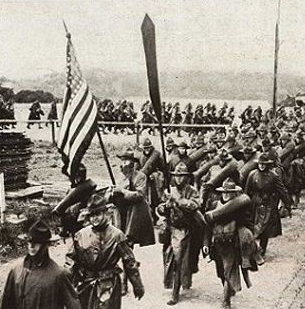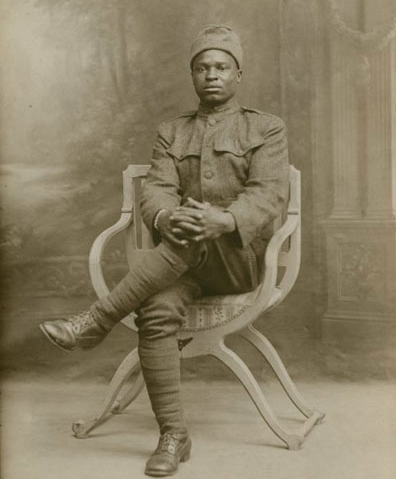EDSITEment, a program of the National Endowment of the Humanities for K-12 teachers and their students, features extensive World War One learning resources.
 |
United States Entry into World War One: A Documentary ChronologyIn this curriculum unit, students reconsider the events leading to U.S. entry into World War I through the lens of archival documents. o Lesson 1: United States Entry into World War One: Two Diametrically Opposed Views
|
|
 |
African-American Soldiers in World War One: The 92nd and 93rd DivisionsLate in 1917, the War Department created two all-black infantry divisions. The 93rd Infantry Division received unanimous praise for its performance in combat, fighting as part of France’s 4th Army. In this lesson, students combine their research in a variety of sources, including firsthand accounts, to develop a hypothesis evaluating |
|
 |
The Great War: Evaluating the Treaty of VersaillesWas the Treaty of Versailles, which formally concluded World War I, a legitimate attempt by the victorious powers to prevent further conflict, or did it place an unfair burden on Germany? This lesson helps students respond to the question in an informed manner. Activities involve primary sources, maps, and other supporting documents related to the peace process and its reception by the German public and German politicians. |
|
 |
African-American Soldiers After World War One: Had Race Relations Changed?In this lesson, students view archival photographs, combine their efforts to comb through a database of more than 2,000 archival newspaper accounts about race relations in the United States, and read newspaper articles written from different points of view about post-war riots in Chicago. |
|
 |
The Debate in the United States over the League of NationsAmerican foreign policy continues to resonate with the issues surrounding the debate over U.S. entry into the League of Nations—collective security versus national sovereignty, idealism versus pragmatism, the responsibilities of powerful nations, and the use of force to accomplish idealistic goals, the idea of America. Understanding the debate over the League and the consequences of its ultimate failure provides insight into international affairs in the years since the end of the Great War and beyond. In this lesson, students read the words and listen to the voices of some central participants in the debate over the League of Nations. o Lesson 1: League of Nations Basics
|
|
 |
Woodrow Wilson and Foreign PolicyThe influence of President Woodrow Wilson on American foreign policy has been profound and lasting. Using a variety of primary sources, students analyze the origins of the ambitious foreign policy that came to be known as Wilsonianism and compare it with important alternative traditions in American foreign policy. o Lesson 1: The Origins of "Wilsonianism”
|
|
 |
The United States and Europe: From Neutrality to War, 1921–1941Over the two decades between World War I and World War II, Americans pursued strategies aimed at preventing another war. In this four lesson unit, students use primary sources and an interactive map to examine the rise of antiwar sentiment and legislation in the United States and the main arguments used by both sides as to whether the United States should enter the war or remain neutral. o Lesson 1: Postwar Disillusionment and the Quest for Peace, 1921–1929
|
